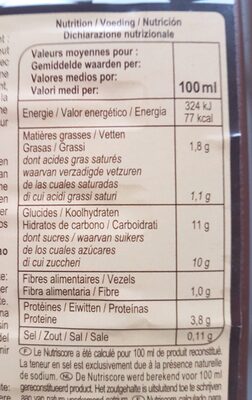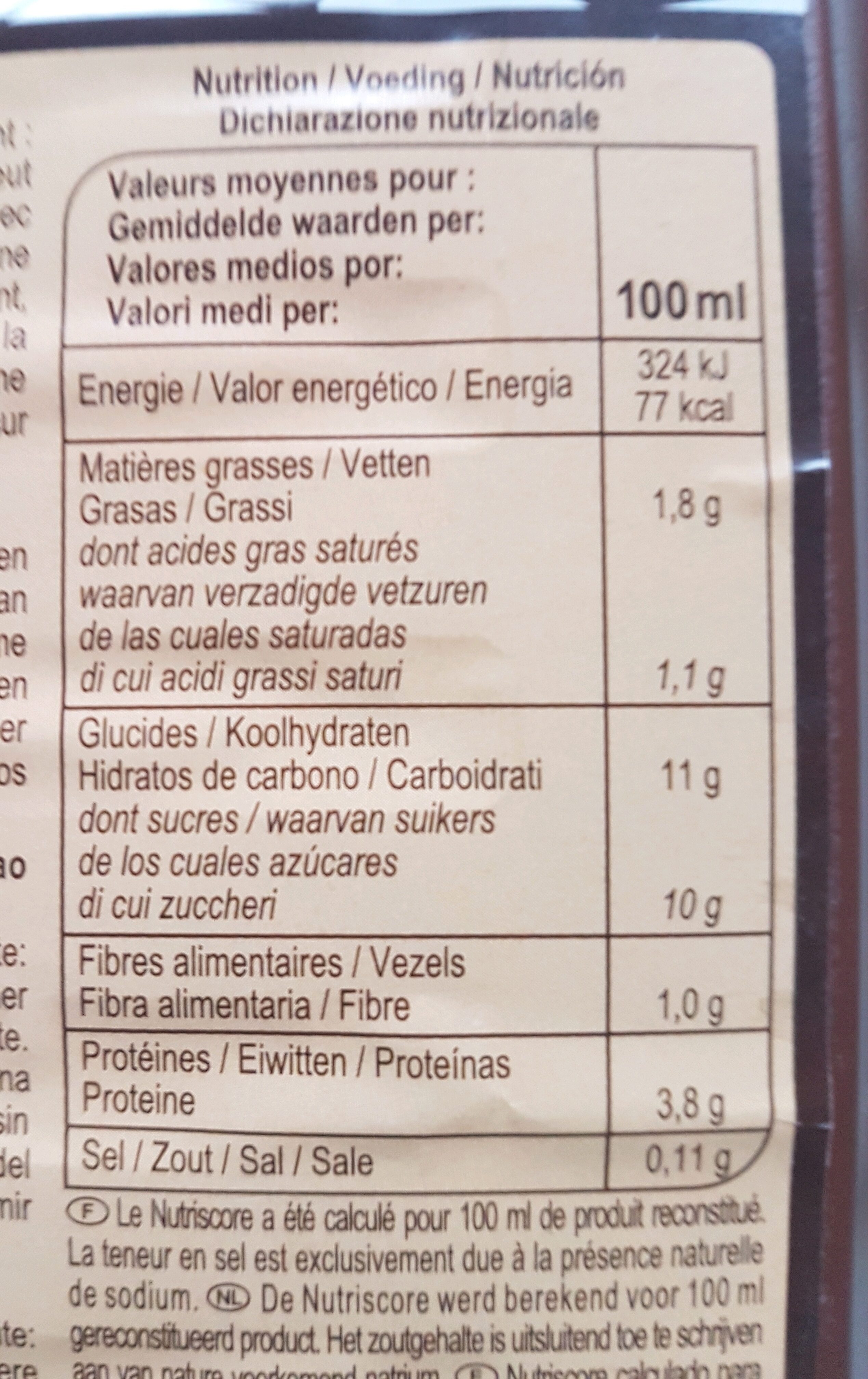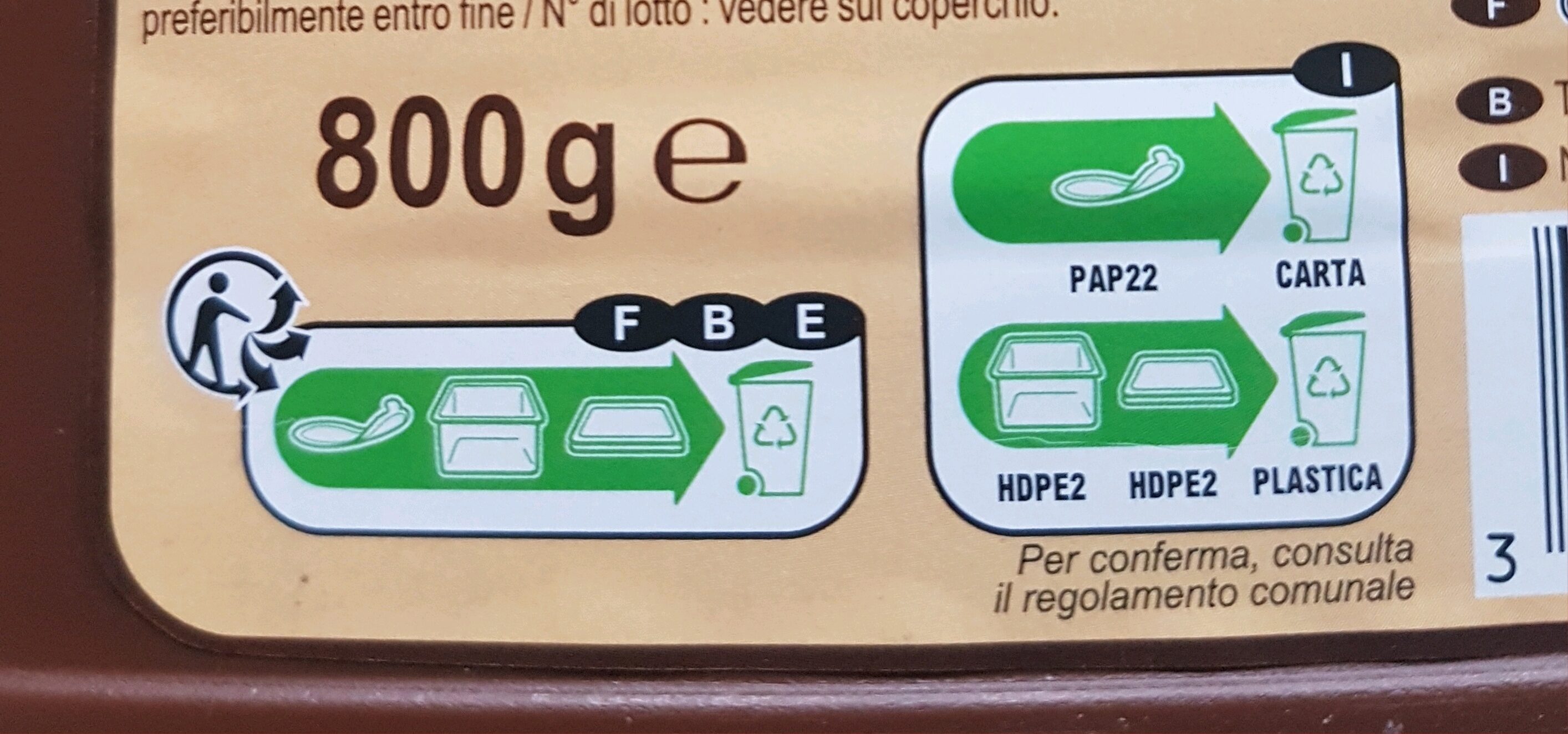Cacao intense - Carrefour - 800 g
This product page is not complete. You can help to complete it by editing it and adding more data from the photos we have, or by taking more photos using the app for Android or iPhone/iPad. Thank you!
×
Some of the data for this product has been provided directly by the manufacturer Carrefour.
Barra-kodea: 3560070982073 (EAN / EAN-13)
Izen arrunta: Préparation en poudre pour boisson instantanée au cacao maigre.
Kopurua: 800 g
Ontziratzea: en:Plastic, 22 PAP, en:Box, en:Seal
Markak: Carrefour, Carrefour Classic’
Kategoriak: en:Beverages, en:Cocoa and its products, en:Cocoa and chocolate powders, en:Instant beverages, en:Cocoa powders, en:Chocolate powders, en:Cocoa powder for beverages with sugar
Etiketak, ziurtagiriak, sariak:
en:Distributor labels, en:Carrefour Quality, en:Green Dot, en:Made in Germany, Nutriscore
Manufacturing or processing places: Allemagne
Dendak: Carrefour Market, Carrefour
Saltzen diren herrialdeak: Frantzia, Italia, Maroko, Espainia
Matching with your preferences
Other information
Preparation: Votre boisson cacaotée se prépare avec du lait chaud. Ajoutez 5 à 6 cuillères à café de préparation (environ 20 g) dans une grande tasse ou un bol. Versez le lait chaud (environ 20 cl), mais non bouillant, progressivement en remuant bien.
Conservation conditions: À conserver à l'abri de la chaleur et de l'humidité. Bien refermer la boîte après chaque utilisation. Pour une dégustation optimale, à consommer de préférence avant fin / N° de lot : voir sur le couvercle.
Customer service: Interdis - TSA 91431 - 91343 MASSY Cedex - France.
Report a problem
Datuen iturria
Product added on by kiliweb
Last edit of product page on by thaialagata.
Produktuaren orria -gatik editatua beniben, desan, ecoscore-impact-estimator, espessetgregoire, fix-serving-size-bot, fpdsurveys, guezguez-majed, mbe, minettebis, openfoodfacts-contributors, org-carrefour, packbot, quechoisir, roboto-app, scanbot, sebleouf, teolemon, yuka.UmJrdVQ0bGVsK3NJdnZJaCtpN040T01rN3FhN2VuMldFTlpKSUE9PQ, yuka.VDZvaEc0QVF1K2RUeGZkaTdoTDR3K05uK3FhRmJYdU5KT1l0SVE9PQ, yuka.sY2b0xO6T85zoF3NwEKvlhNaAv79jzHoFEbiiVe7z8uEdYHNeeMt-66nPqs.
Last check of product page on by beniben.













